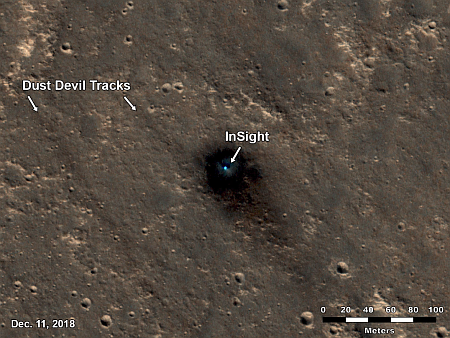Curiosity looks down and across Gale Crater
Cool image time! The picture to the right, cropped, reduced, and enhanced to post here, was part of a panorama created by 24 photos taken by the right navigation camera on the Mars rover Curiosity on December 16, 2024.
The view looks west at the foothills that fill the lower slopes of Mount Sharp. In the far distance, about 20 to 30 miles away, can be seen the western rim of Gale Crater, obscured by the dust in the Martian atmosphere.
Curiosity is presently contouring west along the mountain slope. As it goes it will pass a series of canyons coming down the mountainside. The goal is to eventually reach the canyon the science team has chosen to take for climbing that mountain.
Note the rocky ground. One of the surprises found as Curiosity left the crater floor and started climbing Mount Sharp about four years ago is the rockiness of the terrain. Unlike Earth, Mars’s atmosphere and environment does not have the activity to smooth out this landscape. While science data suggests flowing water was once present here, it wasn’t here long enough to smooth things out. And the atmosphere is just too thin.
» Read more
Cool image time! The picture to the right, cropped, reduced, and enhanced to post here, was part of a panorama created by 24 photos taken by the right navigation camera on the Mars rover Curiosity on December 16, 2024.
The view looks west at the foothills that fill the lower slopes of Mount Sharp. In the far distance, about 20 to 30 miles away, can be seen the western rim of Gale Crater, obscured by the dust in the Martian atmosphere.
Curiosity is presently contouring west along the mountain slope. As it goes it will pass a series of canyons coming down the mountainside. The goal is to eventually reach the canyon the science team has chosen to take for climbing that mountain.
Note the rocky ground. One of the surprises found as Curiosity left the crater floor and started climbing Mount Sharp about four years ago is the rockiness of the terrain. Unlike Earth, Mars’s atmosphere and environment does not have the activity to smooth out this landscape. While science data suggests flowing water was once present here, it wasn’t here long enough to smooth things out. And the atmosphere is just too thin.
» Read more












